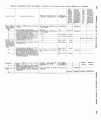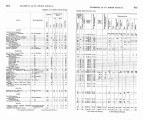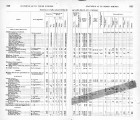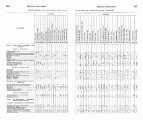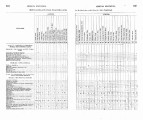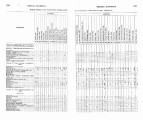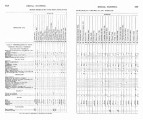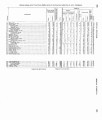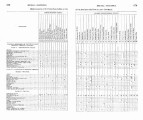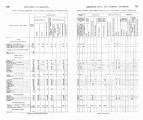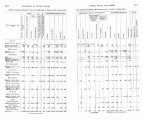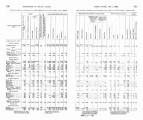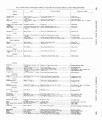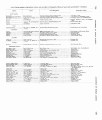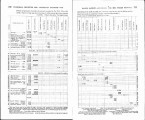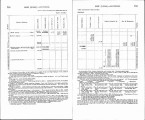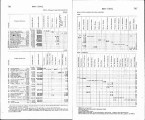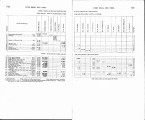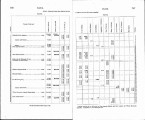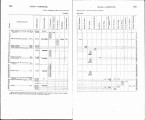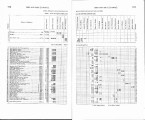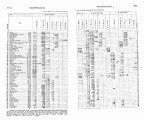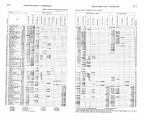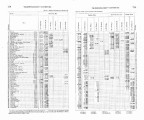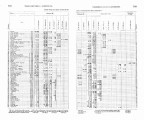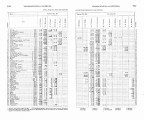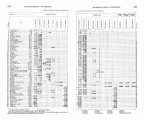| OCR Text |
Show ' ! I ~ -- -- - - -- - - -- - - ~ REPORT OF AGENT IN COLORADO. 133 to west and 15 miles from north to south, an area of 1,710 square miles or 1,1002400 acres. I am unable to say what pproportlon of this can be brought under eultivat~on, but there is enough and to spare to give each Inllian all that he can profitably use, and the mmy mountain streams whtch oroas the reservation will, if utilized, afford an ample, unfaiiiug supply of water for irrigation, without which na farming operations can be s~~ccessfulolwy rried on. The agency is lorated on the Rio Los Pinos, about 6 miles below the northern line, :md about 50 miles \vest of the eastern boundary of thereservation. TheDenver andRio Grande Railway oroases diagonally through the eaatern portion, having some 50 miles of trsokoil thereservation. The station ofIgnsoio, 1s miles south, is the post-otfice and shippingpaint forthis agency. The eastern boundary has been the subjeot of 80m0 discussionreoe~rtly,t hewhites olaiming that the line is too far eastward, and have, I underatznd, located some clairna within what, the Indiana say, is the boundary line. This mnj lead to some complications if tho Indians remain here, in ~ l i i c hca se I recommend that the line be eacurstely surveyed aad milrked. Buildings.-The buildings a t the agency are, as I hnve pr e~iol~s lreyp orted, in sr wretched state of repair and inadequate for even the small force of employ&, or tho proper protection of the Government property. Wpu1atien.-The reservation is ocoupied by the Ca.potss, &Ioeches, and Weeminu-chee bands of Soutllern Utes, numbering in all about 1,000. About half are Woeminuohees. Condition.-Xearly all are in the blanket andlegging stage and e ~ o e ptth e few who are engaged in farming, live in lodges during the entire year. "l'ne polieemen wear the uniform pretty regularly, but except 3. shirt and sombrero very little citizens' clothing is worn by thc rest. Allotments and agrieu1tore.-No allotments have been made and hut little farmin comparatively, is done the Indians generallv bein averse or indiferent to hot% while the removal queQtion remains in its present $ape. Still the suoeess of the few who are, with the assistance of &Iehicnll tenants on the shares, engaged in farming, is tho cause of n good deal of thinking on the part of t.he others, and it only needs encouragement by the Governnlent to largely increase the num-her of farmers. The native grBsses of the reservation have almost entirely dis-appeared, as is the oat30 throughout this Wostnrn co~intry, a d open ranges are rap-idly becoming things of the past. The Indiaus see this, and the neoessity of pro-viding winter forage is slowly, bnt enrely overauming their great aversiontosteetly work and s, settled life, and s e~e r ahl a ve iignified their desire to engage in farming. Nearly all tho farming, I might say all, is done by the Capotas nnd Moaohra, and the most sncoessfi~l aniong them are Charles Buck and Sevnro, chiefs of the two bands, respectively. The Weemiuuchees occnyy the larger and vestern part of the reservation, and devote themselves to stock-raising and huntiug. Hay seems to be the principal crop, and in this connection I call nttention to the mowing machines on hand. the^. are too heavy in draft, oomplie~~teidn pattern, and constantly breaking. I recommend that in fntiire the Walter A. Woodmachine he sent out. One Indian has bought a. rnaohino of his own. Thirty-fonr Indians are f:mning on separate unallotted tracts, and are clearing these tiom brunh aud strenythening feuoes. Somehare madet,hcir irrigating ditches, where water was easily accessible. Four Indian8 are working for othm on farms and 4 others have bought with their own means light spring wagons. Education.-There is no school on this reservation. The Indians have analmoat invincible repugnance to sending their children awry and indeal one ecan not wonder at it, when we hear dhnt out of 26 sent to Albu;;~er<pe sonre years isgo 12 died there, or soon after theirratunl, and of tho 10 proonred under grest stress tbr the Fort Lewis ~chool lnat year 3 lmve died and S have become blind. I do not mean toimply that this was the halt of myperson or system; hut it is a grest misfortune, due principally to oonstitutional disease, I inlsiius, and has prejudiced tile minds of these Indians tuaerd nonresorvation schools. Meanwhile I lose no opportunitx of impressing them with the nrlvrtntage and ~~eoes s iotfy educating their ohildren, and several who live near the agency have espressed a desire to have a da.y aehool. eyed. lhe blind son of Colorow and the daughter of Amararioio have retnrned home from Fort Lewis. I shall endeavor to have Colorow sand the boy wit,h the other bli~ld children and the deaf mote to the St,ate asyhzm in accordance with your instruotiona. Ms6ionarywork.-No missionary work, ao far as I can asoertain, has ever been I done among theae Indians. I Courts of Indisn offenses.-Xoue me in esistenee nor does there seem to bo a t this time any necessity for t,hem. Boad wok in limited ta bridges orer ditches, filling holes, eto: nothing in s, general way. Industries, traaes, snd arts.-There are none, iznlass the raising of ponies, herding s, I few sheep and goats may becalled suoh. Nothing ismanufactured or made by them |








































































































































































